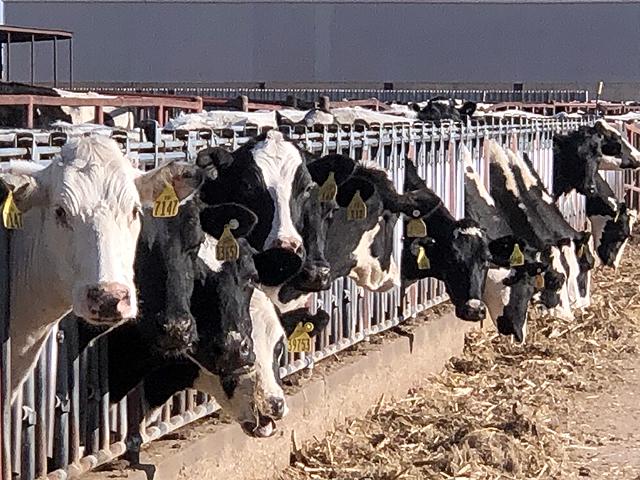Dairy HPAI Cases Now in 5 States
Bird Flu Outbreak in Dairy Cows Spreads to Michigan, Idaho and New Mexico
OMAHA (DTN) -- The outbreak of highly pathogenic avian influenza cases in dairy cattle has spread from two states to five with new cases confirmed in Michigan and more "presumptive positive tests" in Idaho and New Mexico, according to federal officials.
USDA, the Food and Drug Administration (FDA) and the Centers for Disease Control and Prevention (CDC) are reporting more cases of "an illness among dairy cows that is causing decreased lactation, low appetite, and other symptoms."
This follows reports on March 25 of highly pathogenic avian influenza in two dairy herds in Texas and two herds in Kansas, USDA stated.
State officials in Michigan and Idaho each stated that the affected dairies in their states had received the dairy cows from farms in Texas. USDA's National Veterinary Services Laboratories (NVSL) confirmed HPAI in a Michigan dairy herd that had recently received cows from an affected farm in Texas, USDA reported.
That could change the dynamics of the outbreak, indicating cow-to-cow transmission could be possible.
"Spread of symptoms among the Michigan herd also indicates that HPAI transmission between cattle cannot be ruled out," USDA's Animal and Plant Health Inspection Service stated.
Tim Boring, director of the Michigan Department of Agriculture and Rural Development, stated the infected dairy herd there was in Montcalm County -- near central Michigan. Boring said the infected cattle were not symptomatic and did not appear ill when they arrived in Michigan from Texas.
P[L1] D[0x0] M[300x250] OOP[F] ADUNIT[] T[]
Michigan officials also stressed that it is essential for all producers to contact their veterinarians if they have any concerns about the health of their herd "regardless of species."
USDA added that the department and partners continue to monitor the situation and have advised veterinarians and producers to practice good biosecurity, test animals before necessary movements, minimize animal movements, and isolate sick cattle from the herd.
Among the dairies whose herds are exhibiting symptoms, the affected animals have recovered after isolation with little to no associated mortality reported.
Along with the confirmed Michigan cases, presumptive positive test results have also been received for additional herds in New Mexico, Idaho and Texas, though USDA stated more updates would come if those tests are confirmed by the veterinary lab.
The Idaho Department of Agriculture reported cases of HPAI had been found at a dairy cattle operation in Cassia County.
"The affected facility recently imported cattle from another state that had previously identified cases of HPAI in cattle," Idaho officials said. They added, "It is suggested the virus may be transmitted from cow-to-cow, in addition to previous reports indicating cattle were acquiring the virus from invested birds."
Idaho officials stated that there had been a quarantine placed on the dairy farm involved, meaning no livestock were permitted to enter or exit the farm. The infected cattle were also being quarantined from other cattle on the farm.
As these cases have cropped up, state and federal officials have stressed there is no concern about the safety of the commercial milk supply. Milk from sick cows is not permitted to be shipped for consumption. Further, pasteurization inactivated bacteria and viruses.
The NVSL has also confirmed that the strain of the virus found in Michigan is very similar to the strain confirmed in Texas and Kansas that appears to have been introduced by wild birds -- H5N1, Eurasian lineage goose/Guangdong clade 2.3.4.4b.
Federal officials added, "Initial testing has not found changes to the virus that would make it more transmissible to humans. While cases among humans in direct contact with infected animals are possible, this indicates that the current risk to the public remains low."
Also see " Avian Influenza on Dairy Farms Leads to More Questions - UPDATE" here:
Chris Clayton can be reached at Chris.Clayton@dtn.com
Follow him on X, formerly known as Twitter, @ChrisClaytonDTN
(c) Copyright 2024 DTN, LLC. All rights reserved.




